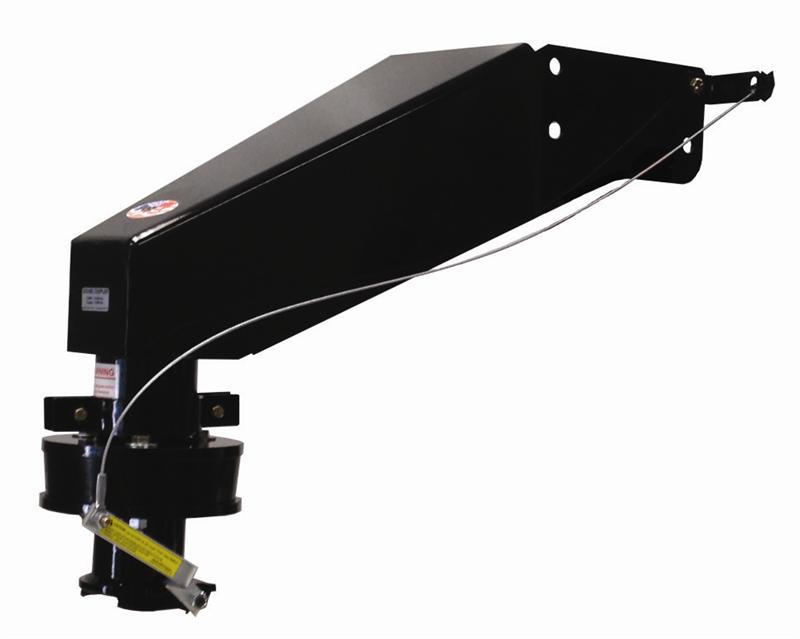
The EXECUTIVE Fifth Wheel to Gooseneck pin box allows the user to hook a Fifth Wheel RV to the truck with a gooseneck ball. Protected under Patents – US D873723S US10633039B2 Neither I, nor anyone else on here knows the answer to that question.Please Note: This unit works with a recessed ball (if top of the ball is within 1″ of truck bed). What I said (twice) is he should ask the trailer (or frame) manufacturer if the frame is strong enough for the gooseneck hitch. If you read my post, I did not say if he should or he shouldn't use the gooseneck hitch.

Then you still have to hook the safety chains if you abide by the law, which I and most people do. I've done it for years, until I decided to replace my goosenck coupler with a (fifth wheel) pin. Then, try it when you are hooking up at an angle. Sit in the cab of any extended or crew cab truck where you can't see the ball and try to hook up alone, then tell me how easy it is. They'd be so buried in lawsuits that they wouldn't be able to afford to produce them.Ģ012 Smart-for-two (sometimes hitches a ride in the Voltage!) If the hitch adaptors were such a safety hazard and damaging item, then I would reckon they wouldn't be sold. I'm not sure I believe them, and if you are out of warranty it is a moot point anyway. You learn where "parts" should be to be lined up correctly, and you can get it right the first time. Lining up a gooseneck to hitch up is no harder than lining up a fiver. Yes, some states may require them, but I've never seen chains used yet. I have yet to see an adaptor used with safety chains. A normal gooseneck trailer (stock, horse, flatbed, etc) yes, you have to crawl in the bed - an adpator can have a much different set up. Many have a remote cable to lock onto the ball. No, you do not need to crawl in the bed with all gooseneck adaptors. One of the things that bothers me about these arguements about how hard it is to hook up a gooseneck vs a fiver.

Made it a few inches longer, yes, but not 12". I'm pretty sure it did not add 12" to the hitch, as others have stated. Planned to use it on my bunkhouse fiver, but I could not access the pinbox to attach it. I used a Ranch Hitch Adaptor on my 17,500lb toy hauler. With the fifth wheel, I can hitch/unhitch in a very short time by myself. It's very hard to hitch/unhitch a gooseneck with a crew cab, since you can't see the ball. I went hte other way and converted my gooseneck to a pin, so I don't have to crawl into the box to hook/unhook safety chains and couple or uncouple (pretty hard to do any other way with a dually). They know the strengths of the frame they build and if it is engineered strong enough to be converted to a gooseneck.įor the record, I have a fifth wheel camper and a gooseneck stock trailer that I use in my side business (we sell gun safes).

"Forcing the hitch into the pin"? If anything, it would be the opposite, but I don't know why anyone would force the pin into the hitch.įor the OP, my advice would be to check with the manufacturer of the trailer you have (or the frame) and get their recommendation. My fifth wheel, nor do any of the modern fifth wheel hitches that have four way movement, does not bind on uneven terrain. When you add a foot or more of leverage to the pinbox, which may weigh a ton or more, it has to add a lot of stress to the fifth wheel frame. How can you say "No more stress on the trailer pin and frame than any other way of pulling the trailer". I'm sorry, but your post is purely opinion (with no factual basis) and a biased opinion at that. If you have a short bed truck you will need a pin box extension instead of a regular 5er slider hitch, and those do add stress to the pin box bolts. No binding on uneven terrain and no forcing the hitch into the pin. No more stress on the trailer pin and frame than any other way of pulling the trailer.

Less chance of damage to your truck, and trailer. I use both and the Gooseneck is the better hitch.


 0 kommentar(er)
0 kommentar(er)
